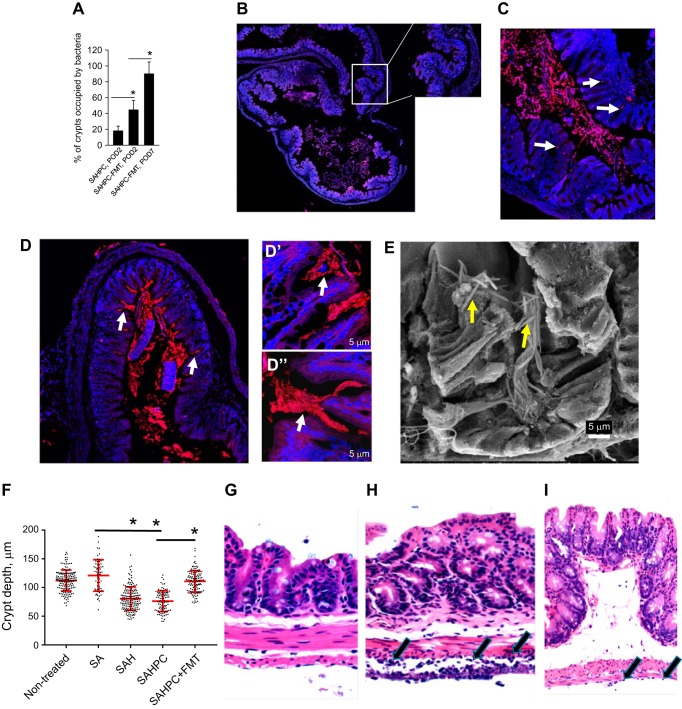Fig. 5.
Fecal microbiota transplantation leads to repopulation of cecal crypts by commensal microbiota. A: quantitative analysis of crypts colonized by microbiota; n = 5 mice/group, 3 cecal sections per mouse, 4,000 crypts/group, *P < 0.05. B: multiplex PC FISH image of cecum SAHPC + FMT, POD3 demonstrating absence of pathogenic bacteria in cecal crypts. C and D″: universal bacterial FISH staining of SAHPC + FMT, POD3 (C) and SAHPC + FMT, POD7 (D and D″). Bacteria in crypts are depicted by white arrows. E: SEM analysis of cecal crypts in SAHPC + FMT, POD7 samples demonstrating repopulation of microbiota. Long rods bacteria are shown by yellow arrows. F: quantitative analysis of crypts′ depth; n = 5 mice/group, ~50–200 crypts/group, *P < 0.01 (nonparametric statistical analysis with Bonferroni correction for multiple comparisons). G–I: H&E staining demonstrating no serositis in SAH (G), severe serositis in SAHPC (H), and mild serositis in SAHPC + FMT (I) groups.

